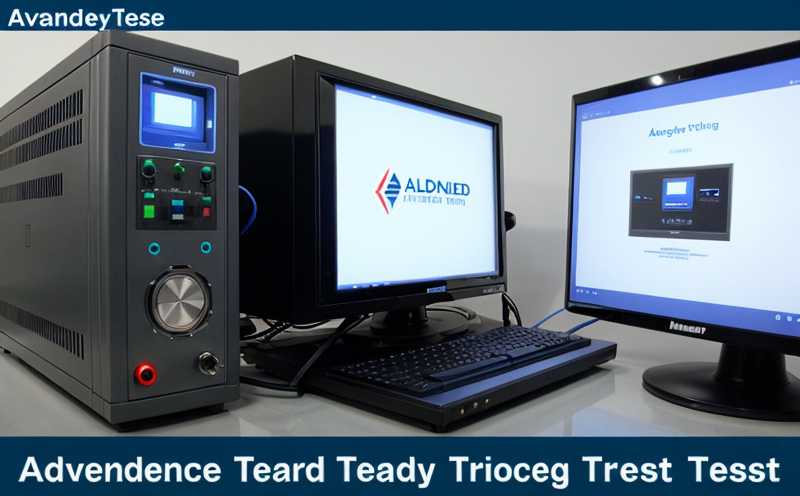ASTM F1291 Surface Topography in Advanced Process Layers Testing
The ASTM F1291 standard is a critical tool used to evaluate surface topography in advanced semiconductor and microchip manufacturing processes. As integrated circuits become more complex, the need for precise measurement of surface features becomes paramount to ensure that the layers adhere properly and perform as designed.
In this context, surface topography refers to the three-dimensional characteristics of a material's surface, including height variations and roughness. These parameters are crucial in determining how well different materials interact with each other during manufacturing processes like deposition, etching, and patterning. The ASTM F1291 standard provides methodologies for measuring these properties accurately, which is essential for quality control and process optimization.
The testing involves the use of advanced optical profilometers capable of capturing nanometer-scale variations in surface features. This level of precision is necessary because even minor deviations from ideal topography can lead to significant performance issues in microchips. For instance, if a layer does not adhere correctly due to roughness or unevenness, it could result in short circuits or other malfunctions.
The process typically begins with careful preparation of the specimen under controlled environmental conditions. This ensures that any variations observed are attributable solely to surface characteristics rather than external factors such as humidity or temperature fluctuations. Once prepared, the sample is then measured using an optical profilometer calibrated according to ASTM F1291 standards.
The measurement process itself involves scanning across the entire area of interest and collecting data points at regular intervals. These data points are used to create a digital representation of the surface topography that can be analyzed in detail. Various parameters such as root mean square roughness (RMS), average peak-to-valley height, and spatial frequency distributions are calculated from this raw data.
The results from ASTM F1291 testing play an integral role in several aspects of semiconductor manufacturing:
- Quality Control: Ensures that each manufactured wafer meets the required specifications before proceeding to subsequent stages.
- Process Optimization: Identifies areas where improvements are needed based on observed deviations from expected surface characteristics.
- Material Selection: Helps determine which materials work best together by evaluating how they interact at the nanoscale level.
Applied Standards
The ASTM F1291 standard is widely recognized in the semiconductor industry for its rigorous approach to measuring surface topography. It specifies not only the measurement techniques but also the acceptance criteria that must be met during testing.
One key aspect of ASTM F1291 is the requirement for high-precision profilometers capable of resolving nanoscale features. The standard outlines specific requirements for these instruments, including their resolution capabilities and scanning speeds. Only those meeting or exceeding these specifications are deemed suitable for use in ASTM F1291 testing.
Another important component of the standard is the provision of guidelines for preparing specimens prior to measurement. This includes instructions on how to handle samples during transport and storage, as well as procedures for cleaning them before analysis. Proper specimen preparation ensures that measurements reflect true surface conditions rather than artifacts introduced by improper handling.
Finally, ASTM F1291 provides detailed descriptions of the various parameters that should be measured and analyzed. Among these are RMS roughness, peak-to-valley height, and spatial frequency distributions. Each parameter serves a specific purpose in evaluating different aspects of surface topography.
Scope and Methodology
The scope of ASTM F1291 encompasses the evaluation of surface topography across various types of semiconductor materials and structures used in advanced process layers. This includes but is not limited to silicon wafers, metal layers, dielectric films, and interconnects.
Testing according to ASTM F1291 involves several key steps:
- Preparation of Specimen: The sample must be prepared under controlled conditions to minimize the risk of introducing external factors that could affect measurement results.
- Calibration of Instrumentation: All equipment used in testing must be calibrated according to ASTM F1291 standards before any measurements are taken.
- Data Collection: Using a high-precision profilometer, detailed scans are conducted across the entire area of interest on the specimen. Data points are collected at regular intervals along predetermined paths.
- Analysis and Reporting: Once all necessary data has been gathered, it is analyzed using statistical methods to determine compliance with specified acceptance criteria outlined in ASTM F1291.
Use Cases and Application Examples
- Wafer Level Inspection: During wafer manufacturing, ASTM F1291 testing is used to ensure that all layers are conforming to design specifications. Any deviations from expected topography can indicate potential issues that need addressing early in the production cycle.
- Laminate Stack Analysis: When multiple thin films are deposited sequentially onto a substrate, ASTM F1291 helps assess how well each layer adheres to those beneath it. Poor adhesion between layers could lead to delamination during subsequent processing steps or final assembly.





